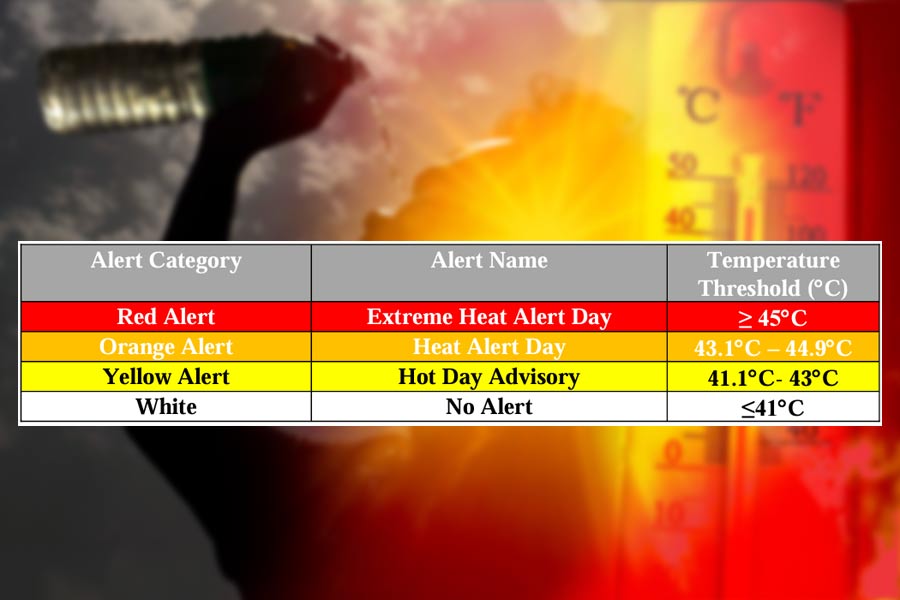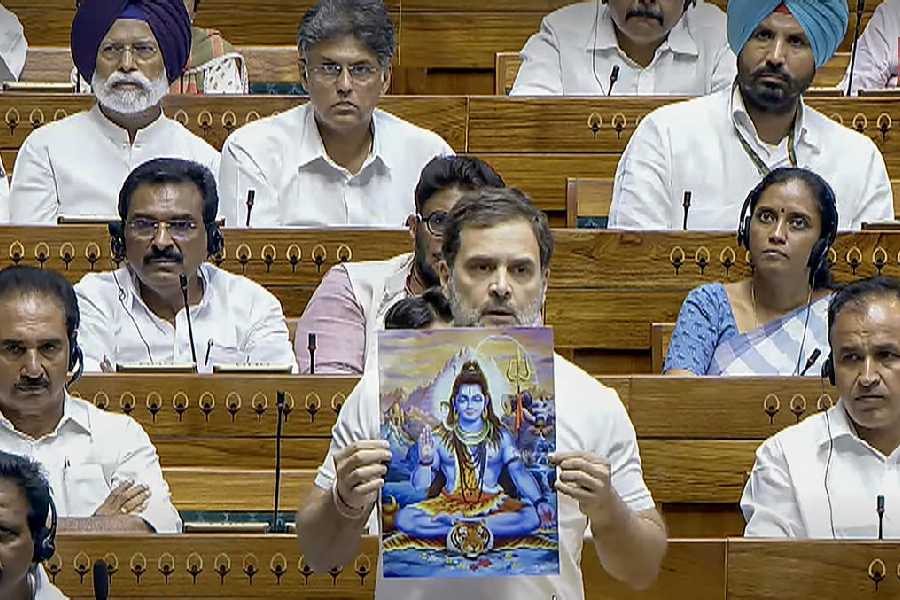A hundred years ago, in the month of June, Calcutta had recorded 43.9° Celsius. It was a rare event. This April, the Bengal capital came close to beating its record, as the daytime temperature touched 43°C.
If this summer feels bad, brace yourself; the worst is yet to come, if climate scientists are right.
Over 25 years, India’s east coast – which includes Calcutta – will see a ten-fold increase in the occurrence of a daily maximum temperature above 43°C, according to a study published in Springer in October 2023. For the west coast, that will be a 16-fold hike, with an average increase in the number of days with heatwave conditions by another seven-eight days.

TTO graphics
This trend of increased heatwave days is expected to start from next year, 2025, and is likely to continue for another 25 years. It will not stop. Between the years 2076 and 2100, the number of heatwaves days is likely to rise by 10-17 days from the present range which, according to the India Meteorological Department, could last from one to five days in spells of short to medium range between the months of March and June.
In extreme cases, that will extend to July.
For Calcutta, it is going to be a double whammy as the discomfort level from heat as well as humidity both are on the rise and are likely to remain on an upward trend.
So, even days of heavy rainfall are unlikely to provide much relief.
The monsoons have already turned more uncomfortable as the average heat index is higher by 3.5°C than the pre-monsoon days in Calcutta, according to another study, by the Delhi-based environmental think-tank Centre for Science and Environment.
Average heat index is a measure of how hot it really feels when humidity is factored in with the actual temperature. According to the United States National Weather Service, a heat index of 41°C is “dangerous for human health”.
The CSE study analysed the heatscape of Calcutta between 2021 and 2023. The report was published early this year.
Research has proven that climate change has impacted both types of heat stress, dry and moist, said Rajib Chattopadhyay, a scientist with the Indian Institute of Tropical Meteorology.
“Moist heat stress is increasing along with dry heat stress,” he said. “Heat stress measures the impact of heatwave on the human body. For our bodies to function normally, a constant inner temperature is required. A heat-stressed body may not function properly.”
Dry heat stress results in dehydration and could have a severe impact on people with adverse health conditions who are exposed to the sunlight for more than the threshold which could range from an hour to 90 minutes or more depending on the individual’s vitals.
“Moist heat stress occurs when the body cannot effectively evaporate away heat and the ambient humidity in the atmosphere adds to the discomfort,” Chattopadhyay explained. “If there is excess moisture, the body is unable to release sweat and cannot cool efficiently. The moist heat stress internally is as harmful as the dry heat stress.”
Between 2001-10 and 2014-23, the relative humidity in Calcutta has increased by 5 per cent which has contributed to an upward surge in the city’s heat stress by 6.6 per cent, according to the CSE.
The decadal heat index in Calcutta has increased on an average by 3.5 per cent, according to the same study.
And the number of days with the daily heat index exceeding 41°C has tripled compared to 2001-10.
In the past two decades, Calcutta’s built-up area has jumped from 70 per cent in 2001 to 80.1 per cent in 2023. In the corresponding period, the city’s green cover has depleted from 15. 2 per cent to 14.5 per cent last year, according to the CSE.
The Ahmedabad model
Ahmedabad was the first city in India as well as South Asia to come up with a heat action plan in 2013. The plan suggested heat-reflecting paint be applied on tin roofs in the low-income dwellings for those forced to live in cemented rooms with poor ventilation and no access to any cooling mechanism. It also has provisions like mandatory cool roofs for all municipal, commercial and government buildings.
The wake-up call for Ahmedabad’s civic authorities came after a particularly disastrous May in 2010, when heat reportedly claimed the lives of over 1,000 people, hospitals were overrun with heatstroke patients and a few hundred bats dropped dead. Bats have dropped dead in Delhi as well this summer.
In Ahmedabad, heat alerts are sent by SMS and WhatsApp and put out via press releases and billboard messages. Health workers, community leaders and radio jockeys are engaged to amplify the message to the masses.
Calcutta’s heat action plan
Bengal’s department of disaster management has prepared a list of dos and don'ts as part of the heat action plan. Calcutta’s municipal corporation is working on a comprehensive climate action plan exclusively for the city.
"Some changes have already been incorporated,” said Debashish Kumar, state legislator and member, mayor-in-council, Calcutta Municipal Corporation. “The process of paving footpaths and pruning trees has been tweaked to reduce frequent uprooting of trees. Any pruning that compromises the balance of a full-grown tree will be considered an offence, as would be the paving of footpath covering exposed roots."
Heatwaves may happen earlier as well
India now has a 10 per cent chance of being hit by an extreme heatwave in late spring, according to a study published in Nature last month. The heatwave in 2022, for example, happened in the month of March in India.
“Heatwave intensity, duration , frequency [of heatwaves] due to anthropogenic climate change is a matter of concern in India. An effective heat plan action needs to be implemented,” said Chattopadhyay.











